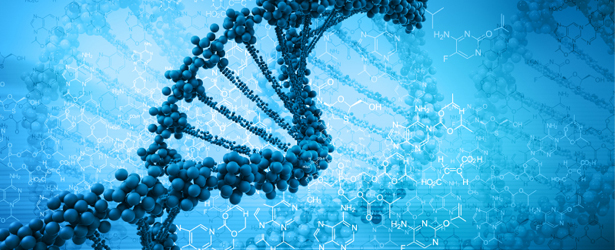
Right now, and in the right circumstances, understanding your personal genome might be a powerful tool for improved health. At the very least, you can learn whether or not you’re a carrier for specific genetic diseases or if you’ve inherited traits that could predispose you to serious illnesses. On the fringes, you might even learn a few things related—either directly or indirectly—to your athletic performance.
I’m an interested bystander in the personal genomics scene, especially because my family background provides a very muddled message of just what diseases I might be predisposed to. I’ll admit—I’m also just curious about all the irrelevant (and perhaps bizarre) details that might emerge from such a test. When I realized that getting a portion of my genome analyzed could make for an interesting elitefts™ article, I put down my $99 for a 23andMe kit, received and completed the test, and popped it in the mail on November 25, 2013.
As it happens, November 25 was the same day we learned that the FDA had sent 23andMe a cease-and-desist letter for its genome testing activities. My hunch is that this will all be cleared up and I’ll eventually get my test completed, though I don't have any clue when. So until I can write more on my personal experience, these articles will focus more on the theoretical than the practical.
The Basics
We’ve pretty much mapped the entire human genome, though we don’t fully understand it. Thanks to the Human Genome Project, we’ve created a full reference sequence for the complete store of an individual’s genetic information. Identifying and labeling all these bits of information was an undertaking for sure—a human sex cell has over three billion DNA base pairs while a body cell has double. If you picture the classic double-helix image of a strand of DNA, it looks like a twisted ladder, and the base pairs make up the ladder’s “rungs.” The nucleobases (the G, A, T, and C molecules that are so prominent in cloning sci-fi) that the rungs are made of and their arrangement within the DNA strand basically make up the human blueprint.
Mapping the genome is just a stepping stone though for figuring out everything that these base pairs control, how they interact, their responses to external variables, and how variations from the reference sequence influence these factors. Because we don’t have the technology to create a clone army where scientists can fiddle around with individual base pairs (which metaphorically would be both the world’s largest and smallest game of Jenga), a large scale test/survey method is the only option for getting lots of data. The first step in this process is collecting DNA samples and health profiles from a lot of people—millions preferably. The second step is sequencing all this data and then organizing it so that connections between health issues and certain sequences become apparent.
While we can individually tease out genetic links to diseases, it’s really most feasible for severe, well-known diseases that have a lot of research funding (e.g., breast cancer, HIV/AIDS). A rare or low grade condition would be very hard to sample in this manner. The 23andMe company is betting that if they sell a lot of kits at a very low cost to interested buyers, they’ll be able to create a de facto epidemiological data set that many agencies, universities, corporations, and research institutions would pay a pretty penny for. Because 23andMe is essentially that last man standing in this arena, the awards could be lucrative.
To give an example of how big this project would be, Guinness lists an ongoing asthma study started in 1996 as the largest epidemiological study around. The 23andMe company hopes to increase their extant data set (which right now is roughly the same size as the asthma study) up to a million users, conceivably within the next few years. As you would expect from a company that was if not founded then parented by Google, 23andMe has ridden a wave of promotion, smart marketing, and perhaps even smarter pricing options to attack this goal.
The benefit to people who buy these kits is a little less dramatic, at least at the moment. You could say that the primary purpose of similarly priced kits offered by National Geographic, Ancenstry.com, and others is amusement. It’s fun to know whether or not you have roots in an unexpected country or a larger-than-average percentage of Neanderthal DNA or if you have wet or dry earwax (I’m not making these up).
As you’d expect, National Geographic and Ancestry.com put their emphasis on heredity. Unlike these price-range competitors, the biggest sales pitch of 23andMe is health. As part of their analysis of your genome, 23andMe will offer you information on a variety of conditions you may or may not be at increased risk for. Cancers, cardiovascular ailments, and diabetes are just the tip of the iceberg.
For the elitefts™ audience, 23andMe already offers input on items that might perk your ears:
- Comparisons of certain traits with high performance sprint and endurance athletes
- Responses to exercise and diet styles
Admittedly, the athlete-specific items aren’t relevant to lifters with any experience. However, as we dig deeper into the data, things might arise that aren’t quite evident (e.g., an exceptional recovery response to a mundane vitamin). The 23andMe company has wisely chosen to promise continual updates relevant to your genomic information (though there’s a mild catch.) The real sell is being ahead of the game for future discoveries.
While potentially the most useful aspect of genetic analysis, this focus on health is also the most controversial and the reason for the company’s recent troubles. It’s also reason for consumers to take “caveat emptor” to heart. In part two, we’ll look at the FDA’s argument and the risks to buyers of the kit as well as where this fits into the medicine/supplement paradigm.









